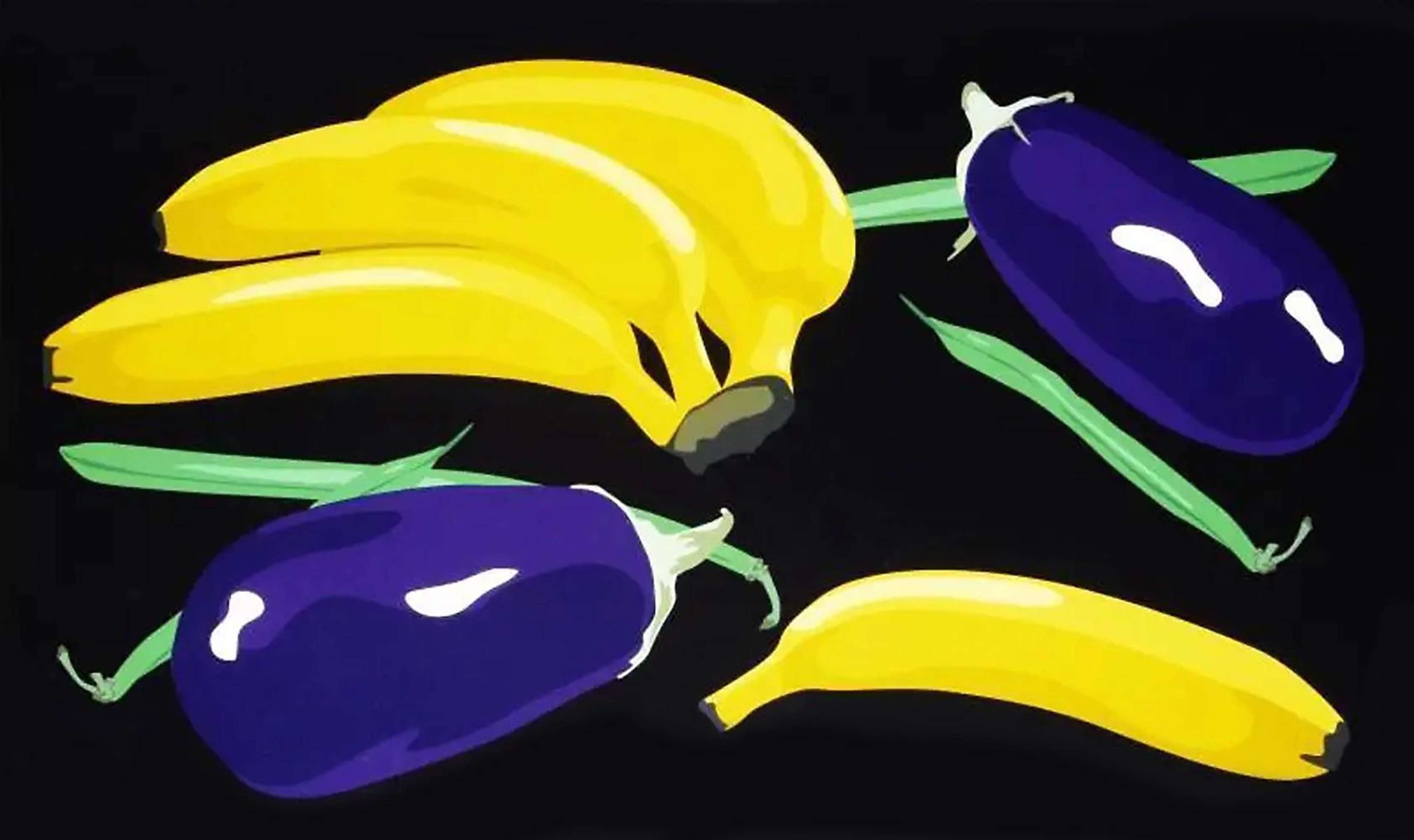
Still Life With Bananas, Aubergines And Green Beans

Still Life With Bananas, Aubergines And Green Beans
Signed Print
Julian Opie
£600-£900
$1,200-$1,800 Value Indicator
$1,100-$1,650 Value Indicator
¥5,500-¥8,500 Value Indicator
€700-€1,050 Value Indicator
$6,000-$9,500 Value Indicator
¥120,000-¥190,000 Value Indicator
$800-$1,200 Value Indicator
There aren't enough data points on this work for a comprehensive result. Please speak to a specialist by making an enquiry.
39 x 65cm, Edition of 40, Digital Print
Auction Results

Track auction value trend
Meaning & Analysis
Still Life With Bananas, Aubergines And Green Beans is a print from Julian Opie’s 2001 Still Life series that shows an image of four bananas, four green beans and two aubergines against a stark, black backdrop. Opie uses this subject as a study of colour and tone, reducing light and shadow into simplified shapes of block colour in each item of food coloured with yellow, green and dark blue.
Still Life With Bananas, Aubergines And Green Beans is reminiscent of 17th century Dutch still life painting in its allusion to realism and starkly contrasted dark background. Indeed, Opie has been interested in engaging with the traditions of art history throughout his entire career, notably in his works A Pile of Old Masters (1983) and Eat Dirt, Art History (1983). With this print, Opie presents a twenty-first century version of the classic art historical genre through his use of computer technology, saturated colour and simplified form.
Engaging with canonical styles of art history, Opie demonstrates his interest not in representing reality but how reality is represented to the viewer. Still Life With Bananas, Aubergines And Green Beans is also indicative of Opie’s claim that the artist and viewers of art will always be constrained by the principles and traditions of art history. Of this in relation to his work, Opie has said, “It was an acknowledgement of the hopeless position of the art student in light of art history, but also a rally call not to feel overwhelmed by it.”